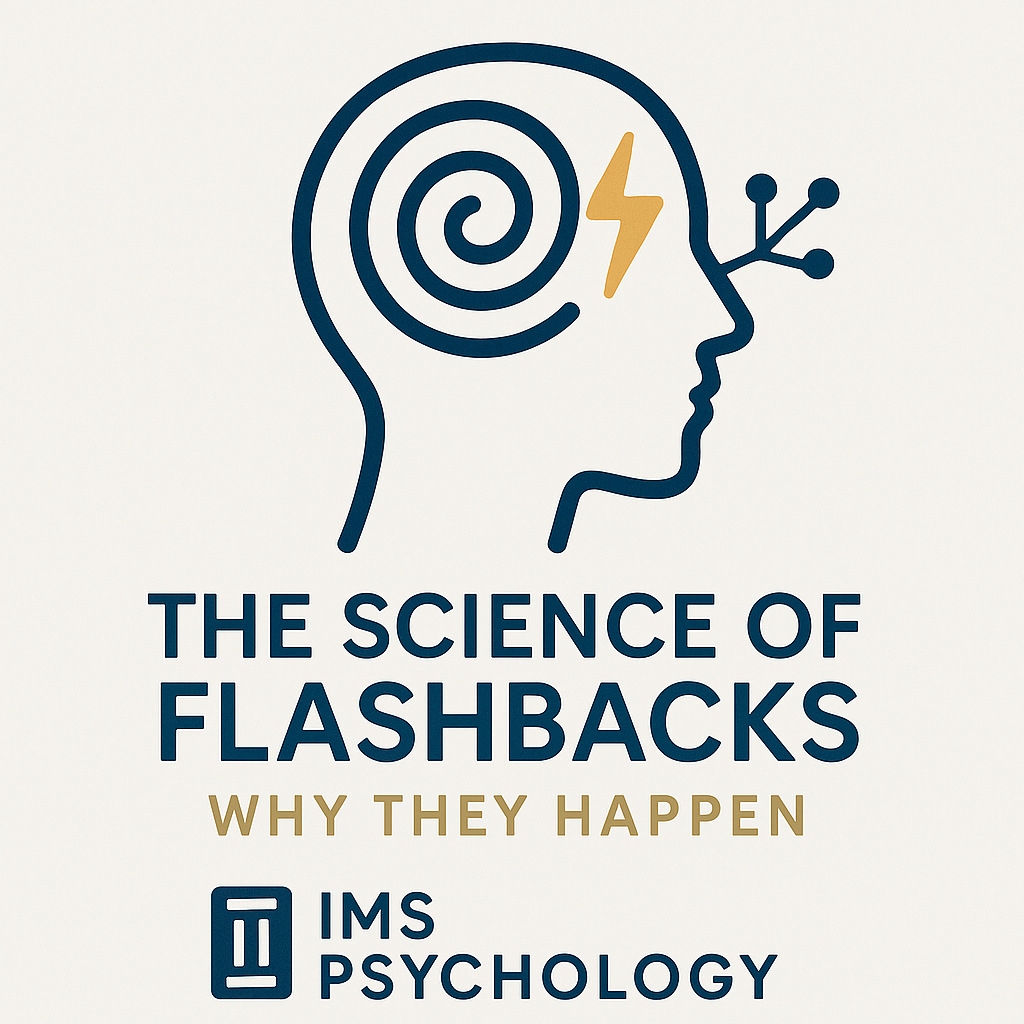
The Science of Flashbacks: Why They Happen
Share
The Science of Flashbacks: Why They Happen
Flashbacks are vivid, intrusive memories linked to trauma. Discover the science behind flashbacks, why they occur, and how to manage them gently and effectively.
Introduction: When the Past Feels Like the Present
For many people, trauma is not just a memory — it can feel like it’s happening all over again. These intense re-experiences, known as flashbacks, often arrive without warning. A smell, a sound, or even a passing thought can suddenly transport someone back into the emotions and sensations of a painful event.
While flashbacks can feel frightening and confusing, they are not random. Science shows they are part of the brain’s way of processing overwhelming experiences. Understanding why flashbacks happen can help reduce shame and open the door to healing.
What Are Flashbacks?
Flashbacks are intrusive re-experiences of traumatic events. They can feel like:
-
Visual memories: images of the trauma replaying in the mind.
-
Somatic flashbacks: body sensations such as tension, pain, or panic without a clear memory.
-
Emotional flashbacks: overwhelming feelings (fear, shame, anger) triggered by reminders of trauma.
Unlike ordinary memories, flashbacks are often fragmented, vivid, and emotionally intense, leaving the person feeling as if the event is happening in the present.
The Neuroscience of Flashbacks
Flashbacks occur because trauma disrupts how memories are stored in the brain.
1. The Amygdala: The Alarm System
The amygdala is responsible for detecting threat. During trauma, it becomes hyperactive, encoding strong emotional responses that can later be re-triggered by reminders.
2. The Hippocampus: Memory Integration
The hippocampus usually helps place memories into context (“this happened in the past”). But under extreme stress, it may not work properly, leaving trauma memories disorganized and easily triggered.
3. The Prefrontal Cortex: Regulation
The prefrontal cortex — the rational part of the brain — often “goes offline” during trauma. This makes it harder to calm the body later when reminders appear, allowing flashbacks to overwhelm.
Together, this explains why trauma memories often feel like raw sensory experiences rather than past events.
Why Flashbacks Happen
Flashbacks are not signs of weakness — they are the nervous system’s attempt to protect.
Common triggers include:
-
Sensory cues (smells, sounds, textures) linked to the trauma.
-
Emotional states (stress, fear, or even positive intimacy) that echo the original experience.
-
Anniversaries or dates connected to the trauma.
Because trauma memories are stored in fragmented, body-based ways, even subtle reminders can activate the old survival response.
Types of Flashbacks
Not all flashbacks look the same. Psychologists often describe:
-
Intrusive Memories: vivid images popping into the mind.
-
Full Reliving Experiences: losing awareness of the present moment, feeling “back in the trauma.”
-
Body-Based Flashbacks: sudden pain, shaking, or panic with no clear memory attached.
-
Emotional Flashbacks: strong feelings of fear, shame, or abandonment without images.
Recognizing these variations helps normalize the different ways trauma resurfaces.
The Role of the Nervous System
Flashbacks are closely tied to how the body responds to threat:
-
Fight or Flight (sympathetic activation): rapid heartbeat, panic, hypervigilance.
-
Freeze or Shutdown (dorsal vagal response): numbness, dissociation, collapse.
This aligns with Polyvagal Theory, which explains how the nervous system shifts between survival states and social safety. Flashbacks are the body’s way of saying: “Something feels dangerous.”
Are Flashbacks the Same as PTSD?
Not everyone who experiences flashbacks has Post-Traumatic Stress Disorder (PTSD). However, flashbacks are one of the core symptoms of PTSD and Complex PTSD (C-PTSD).
PTSD involves:
-
Intrusive memories or flashbacks
-
Avoidance of reminders
-
Negative shifts in mood and beliefs
-
Heightened arousal or vigilance
If flashbacks are frequent and disruptive, professional support can be essential.
Gentle Strategies for Managing Flashbacks
While flashbacks can feel overwhelming, there are trauma-informed tools that can help:
1. Grounding Techniques
-
5-4-3-2-1 method: Name 5 things you see, 4 feel, 3 hear, 2 smell, 1 taste.
-
Temperature shifts: Holding ice cubes or splashing cold water can anchor you back to the present.
2. Breathing Practices
Slow exhalations stimulate the vagus nerve, signaling safety to the body.
3. Orienting to Safety
Look around and remind yourself: “I am here, I am safe, this is now.”
4. Self-Compassion Statements
Instead of fighting the flashback, gently remind yourself: “This is a memory, not the present. My body is trying to protect me.”
5. Safe Connections
Talking to a trusted person, hearing a calming voice, or simply sitting with someone supportive can reduce intensity.
When to Seek Professional Help
If flashbacks are frequent, intense, or interfere with daily life, therapy may be necessary. Trauma-focused approaches such as:
-
EMDR (Eye Movement Desensitization and Reprocessing)
-
Somatic Experiencing
-
Trauma-focused CBT
-
Polyvagal-informed therapy
…can help integrate traumatic memories and reduce flashback intensity.
Practical Tools You Can Use Today
IMS Psychology provides science-based, trauma-informed workbooks designed to help manage symptoms like flashbacks. Our [Trauma Recovery Journal] includes structured grounding techniques, self-soothing exercises, and reflection prompts to support healing.
Conclusion: From Re-Experiencing to Reclaiming
Flashbacks may feel like losing control, but they are the nervous system’s attempt to process overwhelming memories. They are not signs of weakness — they are reminders that healing is still unfolding. With understanding, gentle practices, and the right support, it is possible to regain a sense of safety and begin living fully in the present.
If you’d like structured guidance, explore the IMS Psychology workbooks, created to turn scientific insight into practical tools for everyday healing.
written by,
Martin Rekowski (30.09.2025)
External Source
https://www.ptsd.va.gov/understand/what/ptsd_basics.asp